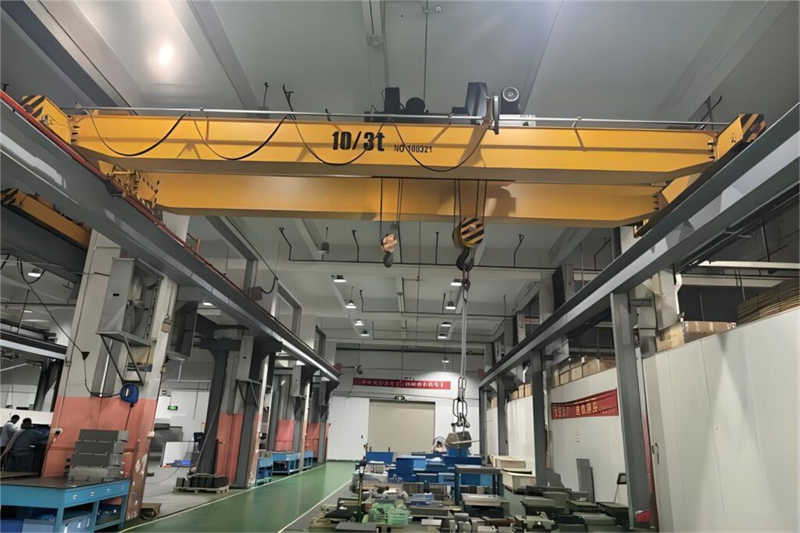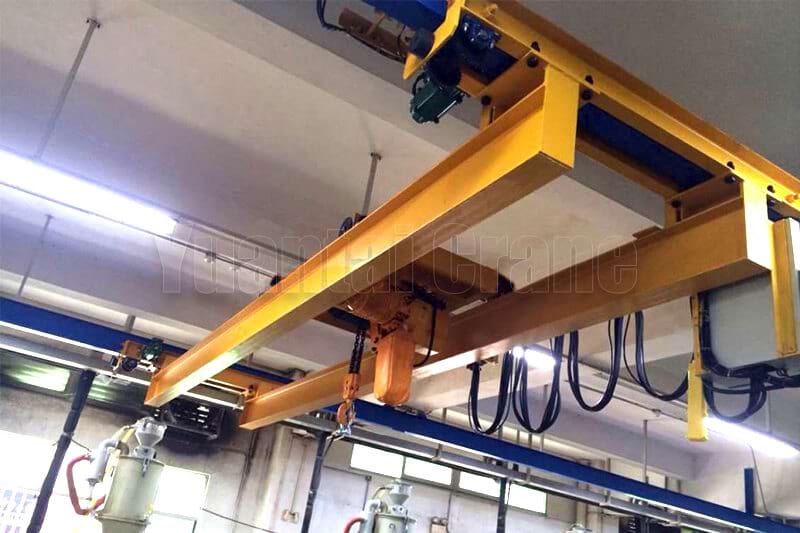Workshop Overhead Crane Buyer’s Guide: How to Choose the Right System
Introduction
Workshop overhead cranes are essential for efficient material handling in manufacturing, automotive repair, metalworking, and assembly operations. Unlike mobile cranes, overhead bridge cranes maximize workspace efficiency by utilizing ceiling space while providing precision lifting, increased safety, and improved productivity.
This guide will help you:
✔ Understand different types of workshop overhead cranes
✔ Evaluate key specifications for your needs
✔ Compare single vs. double girder systems
✔ Learn installation, safety, and cost considerations
1. Types of Workshop Overhead Cranes
(A) Single Girder vs. Double Girder Overhead Cranes
| Feature | Single Girder | Double Girder |
|---|---|---|
| Load Capacity | 1-20 tons | 5-100+ tons |
| Headroom Needed | Lower (saves 20-30% space) | Higher (for heavy-duty lifting) |
| Durability | Good for medium-duty use | Best for heavy, frequent lifting |
| Cost | $5,000–$20,000 | $30,000–$100,000+ |
Best For:
- Single Girder: Small workshops, light-to-medium loads
- Double Girder: Heavy manufacturing, steel handling

(B) Top-Running vs. Underhung Cranes
| Type | Top-Running | Underhung |
|---|---|---|
| Installation | Runs on elevated rails | Suspended from ceiling beams |
| Ceiling Height | Requires more headroom | Ideal for low-clearance workshops |
| Load Capacity | Higher (up to 100+ tons) | Lower (up to 10 tons typically) |
Best For:
- Top-Running: Large factories, heavy loads
- Underhung: Smaller workshops with height restrictions

(C) Manual vs. Electric Hoists
| Type | Manual (Chain Hoist) | Electric (Wire Rope Hoist) |
|---|---|---|
| Operation | Hand-pulled chain | Motorized lifting |
| Speed | Slower (2-4 m/min) | Faster (5-20 m/min adjustable) |
| Best Use Case | Occasional lifting, budget setups | Frequent, high-precision lifting |
2. Key Specifications to Consider
(A) Load Capacity (1T–50T+)
- Light-duty (1-5T): Auto repair, small parts handling
- Medium-duty (5-20T): Metal fabrication, machinery moving
- Heavy-duty (20-50T+): Steel mills, large industrial plants
(B) Span & Lifting Height
- Span (3m–30m): Must match your workshop’s width
- Lifting Height (3m–20m): Ensure sufficient hook travel
(C) Duty Cycle (CMAA Class A–F)
| Class | Usage Intensity | Example Applications |
|---|---|---|
| A (Standby) | Rare use (<25% capacity) | Maintenance shops |
| B (Light) | Moderate use | Assembly lines |
| C (Moderate) | Frequent use | Machine shops, warehouses |
| D (Heavy) | High-intensity | Steel processing |
3. How to Choose the Right Overhead Crane?
(A) Assess Your Workspace
✔ Ceiling Height: Minimum 6m for single girder, 8m for double girder
✔ Floor Strength: Ensure concrete can support runway loads
✔ Obstructions: Check for beams, lighting, HVAC systems
(B) Determine Load Requirements
- Maximum Weight: Include safety factor (e.g., 25% above max load)
- Lift Frequency: Occasional (manual) vs. constant (electric)
(C) Safety & Compliance
✔ OSHA/ANSI Standards: Overload protection, emergency stops
✔ CE/EN 13001 Certification: Required in EU markets
✔ Operator Training: Mandatory for electric cranes
4. Installation & Maintenance
(A) Installation Process
- Runway Beams: Must be securely anchored to building structure
- Electrical Setup: Requires 220V/380V power supply
- Testing: Load testing (125% of rated capacity) before use
(B) Maintenance Checklist
| Frequency | Task |
|---|---|
| Daily | Inspect hooks, wire ropes, brakes |
| Monthly | Lubricate trolley wheels, check bolts |
| Annually | Structural inspection, electrical test |
5. Cost Analysis
| Crane Type | Price Range (USD) |
|---|---|
| Single Girder | $5,000–$20,000 |
| Double Girder | $30,000–$100,000+ |
| Custom Solutions | $50,000–$200,000+ |
Additional Costs:
- Installation ($2,000–$10,000)
- Annual maintenance ($500–$5,000)
6. FAQ
Q1: What’s the minimum workshop height for an overhead crane?
→ 6m for single girder, 8m for double girder (underhung cranes need less).
Q2: Can I install an overhead crane in an existing building?
→ Yes, but structural reinforcement may be needed for runway beams.
Q3: How long does installation take?
→ 2-5 days for standard systems; complex setups may take weeks.
Q4: Are used overhead cranes a good option?
→ Yes, if inspected properly—check for worn wires, structural damage, and motor condition.
Conclusion: Ready to Choose Your Workshop Overhead Crane?
Selecting the right system depends on:
✔ Workspace dimensions (ceiling height, span)
✔ Load requirements (weight, frequency)
✔ Budget (new vs. used, installation costs)
Need Expert Advice? [Contact us for a free consultation]
